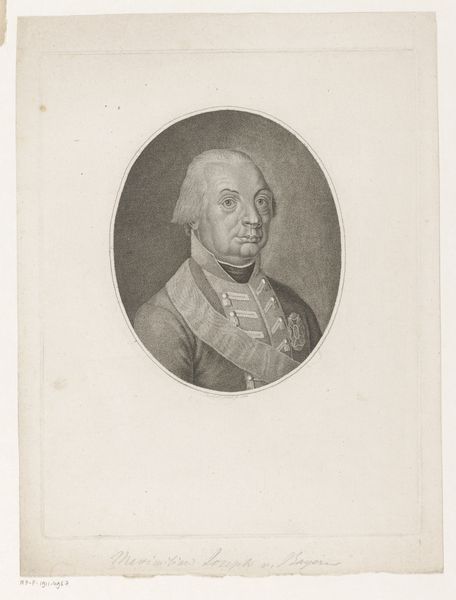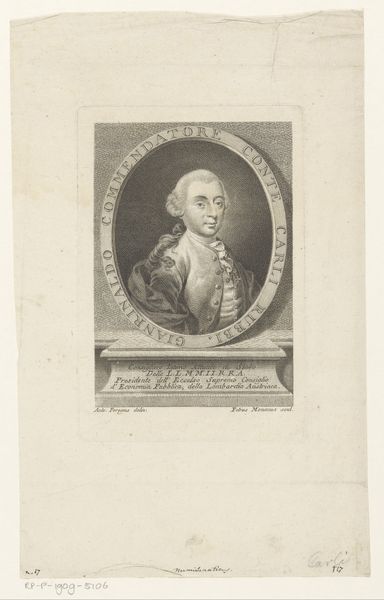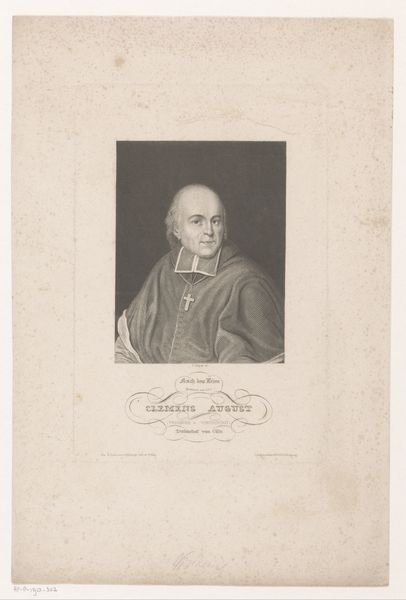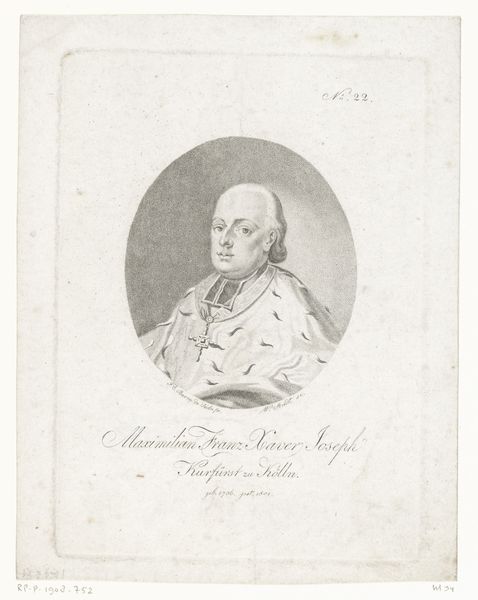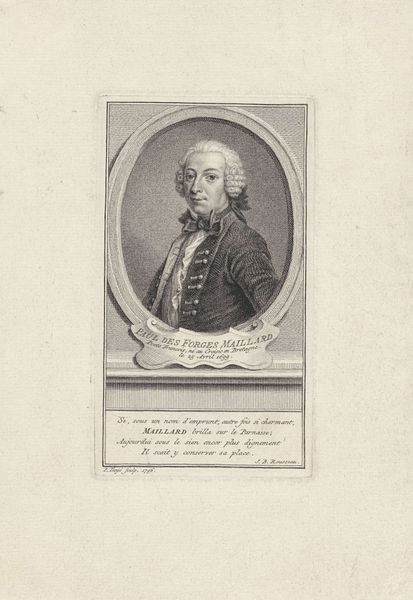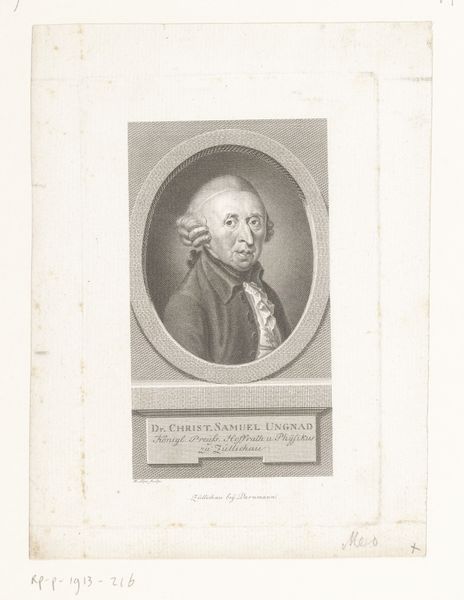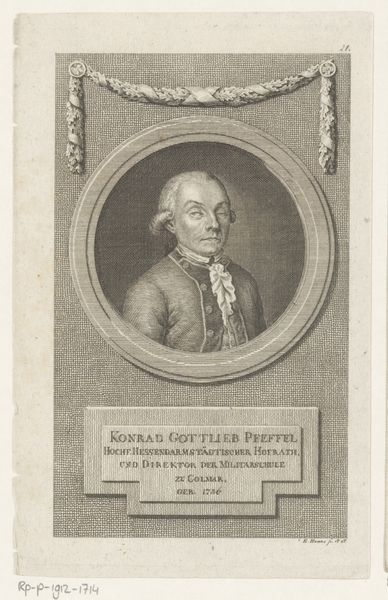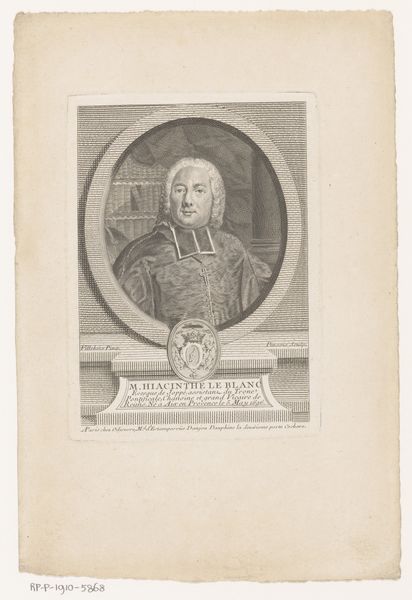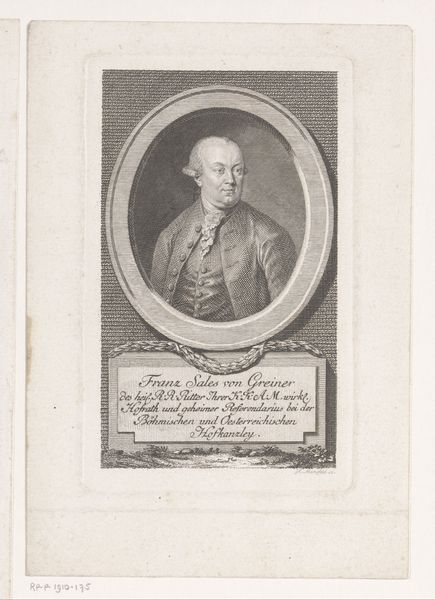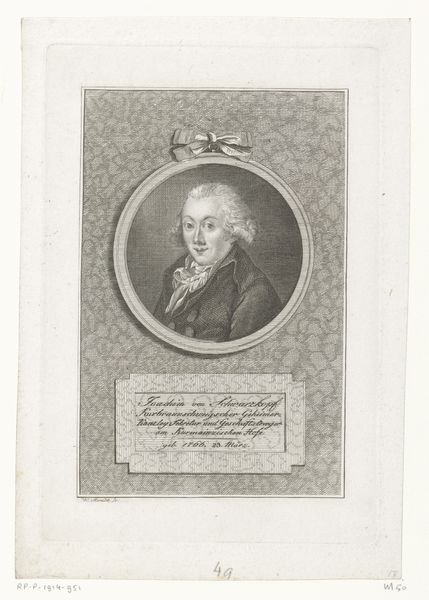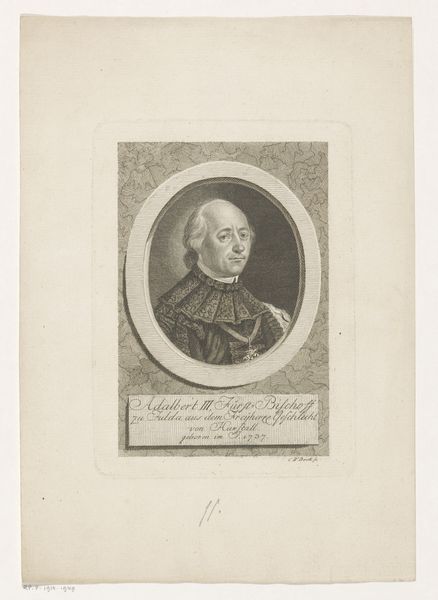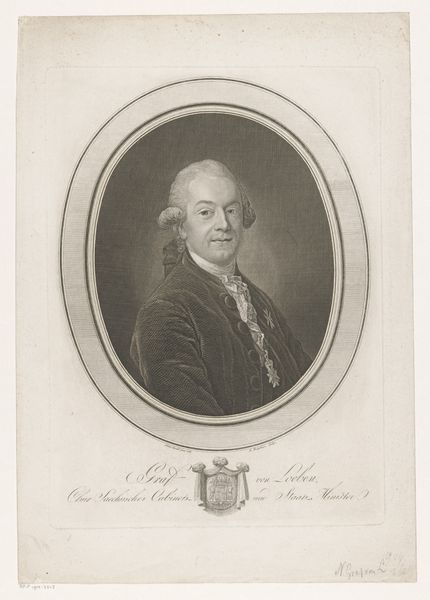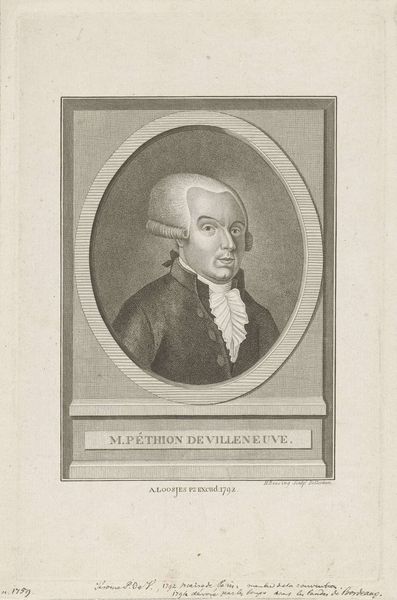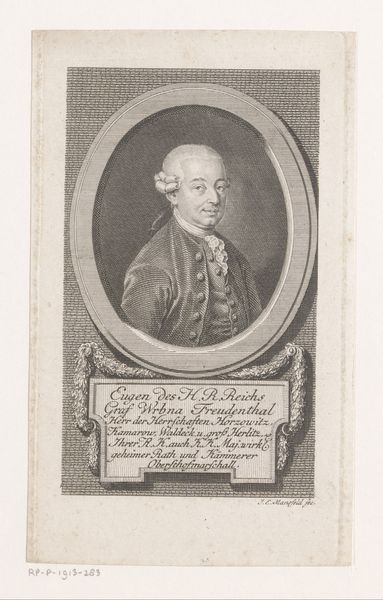
drawing, print, paper, engraving
#
portrait
#
drawing
#
neoclacissism
# print
#
paper
#
form
#
line
#
engraving
Dimensions: height 273 mm, width 193 mm
Copyright: Rijks Museum: Open Domain
Curator: Here we have Heinrich Pfenninger’s 1799 portrait of Johann Rudolf Dolder, rendered through engraving. It’s quite typical of the Neoclassical style, with its emphasis on clean lines and formal representation. Editor: My initial reaction is of stark simplicity. The monochromatic palette emphasizes Dolder's strong gaze, yet there is a sense of distance, even melancholy. Curator: It's interesting you perceive melancholy. From a historical viewpoint, portraits like these were about solidifying status. Dolder was Director of the Helvetic Republic; his white sash is very suggestive. Editor: Symbolically, that sash could also represent purity, or a burden of office, perhaps? Notice how it draws the eye, and the face seems almost sculpted from light. The engraver truly used line to suggest not just form, but also implied deeper emotional reserves. Curator: Indeed. Engraving was an excellent way to mass-produce images and disseminate them, reinforcing a public figure’s persona, right? Pfenninger wasn’t just capturing likeness; he was manufacturing image. The proliferation of imagery was an important pillar for legitimizing political figures in that era. Editor: True, and considering the sociopolitical climate of the time, post-French Revolution and the rise of republics, the style choices signal an intent to emulate the stability and visual language of preceding empires. It attempts to create a visual continuity. Curator: Exactly. But that melancholy you picked up on may also be there. Power never exists in a vacuum. There were competing factions at that point. There could have been conflict with his office. Editor: I am drawn back to that face. It's an incredibly detailed engraving. He’s present, in all the ways the artist wants you to remember him. It’s not about capturing just his physical form; it's creating his lasting impression in the cultural memory. Curator: So in that sense, these images contribute in shaping our contemporary historical narrative, too. It adds texture to our understanding of the era. Editor: Indeed. This work becomes another small layer, subtly shifting meaning as the symbolic field itself continues to evolve.
Comments
No comments
Be the first to comment and join the conversation on the ultimate creative platform.
